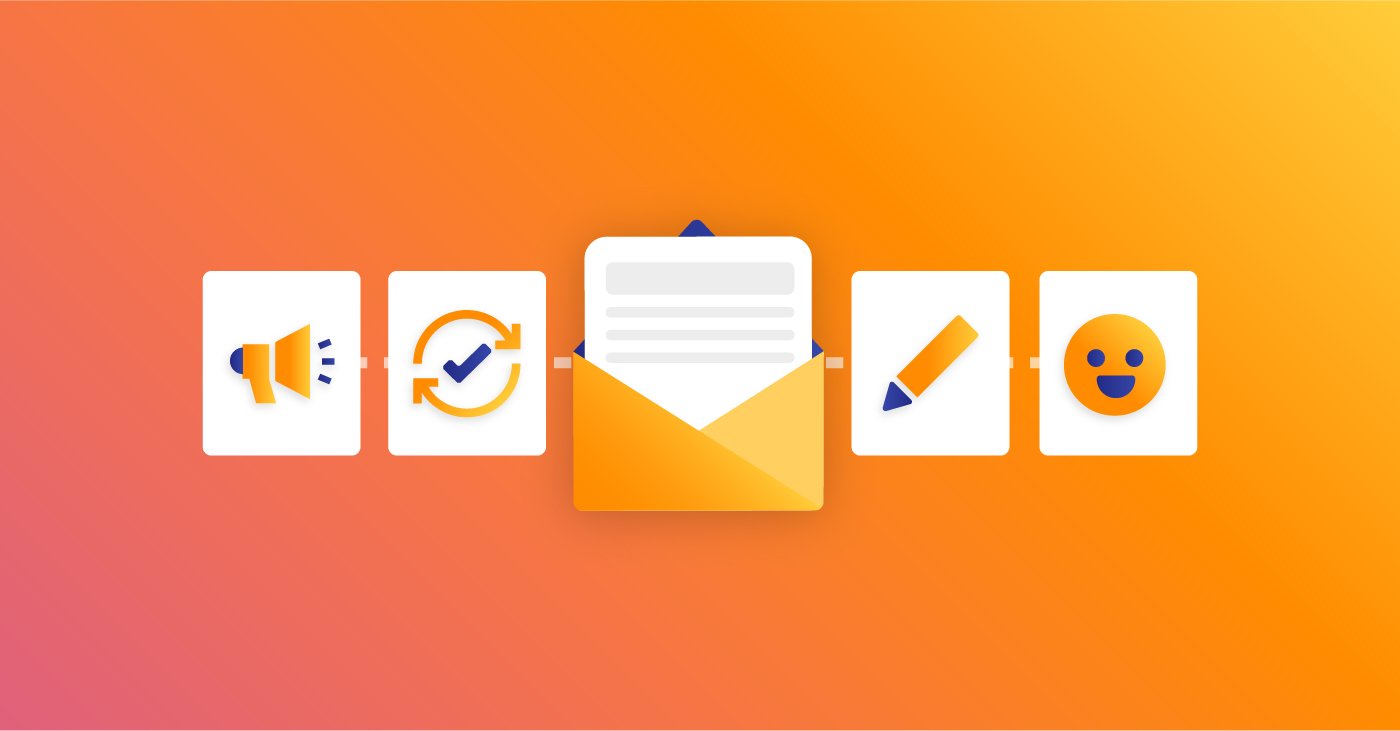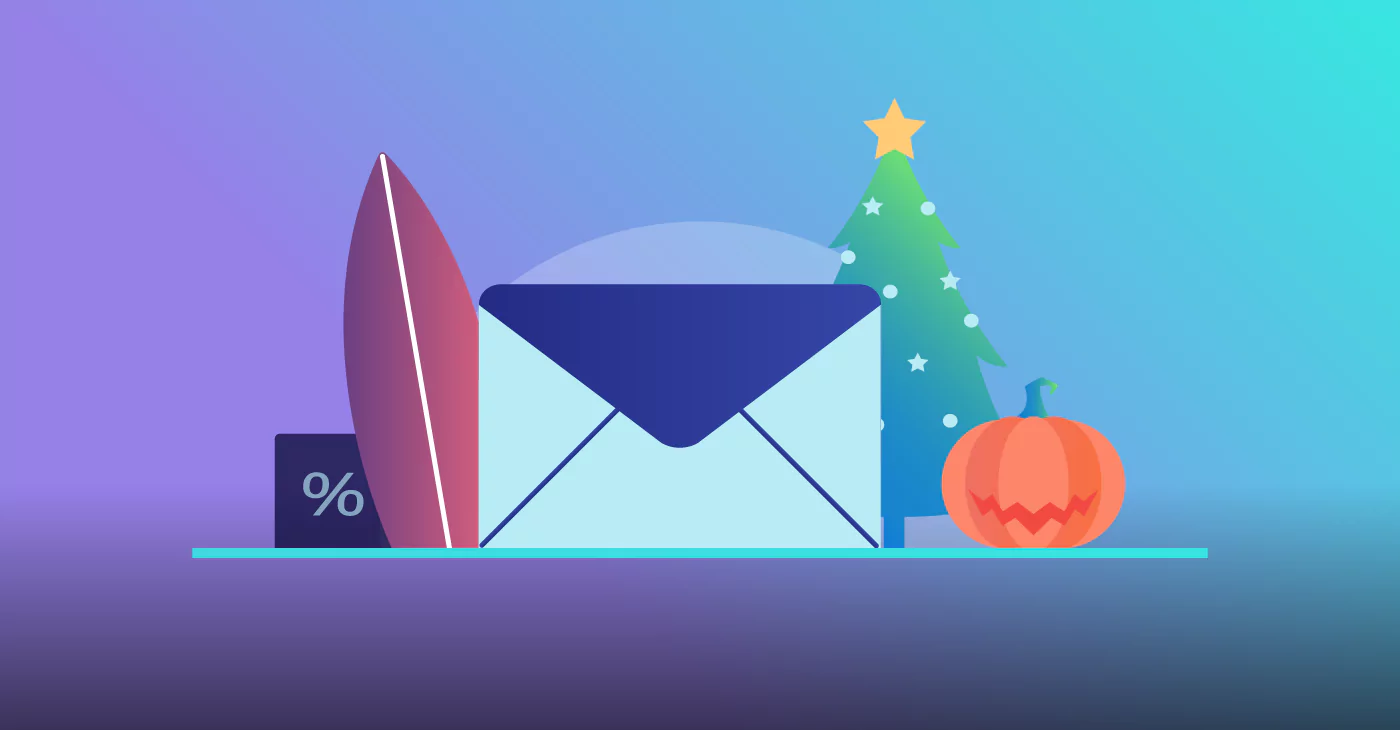
Email marketing is a powerful tool for businesses to reach their target audience and promote their products or services. However, crafting effective email campaigns that drive engagement and conversions can be a challenge.
This is where ChatGPT can help. Trained by OpenAI, ChatGPT generates human-like text and can be used to create compelling email marketing copy.
In this article, we will discuss the benefits of using ChatGPT in email marketing and provide prompt examples for six crucial components of email creation: email subject line, body copy, A/B testing, call-to-action, list segmentation, and email purpose.
The Benefits of Using ChatGPT in Email Marketing
If the thought of content creating AI services both excites and scares you, you’re not alone. Many people are concerned about what AI will mean for their job security, but when it comes to marketing teams, excitement should definitely be the largest emotion felt.
Not only are AI content tools extremely smart, but they can also serve as an additional team member so you can get more achieved without sacrificing time and a large portion of your marketing budget.
AI-generated content is changing the way marketers strategize, craft blog posts and downloadable resources, and even how emails are created. Using ChatGPT specifically offers tons of benefits to your email creation process, including:
- Improved efficiency. ChatGPT can generate content quickly and easily, allowing marketers to focus on other aspects of their campaigns.
- Increased engagement. By using ChatGPT to create personalized and compelling copy, email open and click-through rates are likely to improve.
- Cost-effective. Using ChatGPT is a cost-effective alternative to hiring a copywriter, which can be expensive.
- Scalability. ChatGPT can create content at scale, making it easy to manage large email campaigns.
- Improved targeting. Use ChatGPT to inspire different ways to segment your email list. This will allow you to create better, targeted content for each of your email segments.
Putting ChatGPT to Work: Email Marketing Prompt Examples
As you know, the anatomy of an effective email contains various components. These components ultimately determine the effectiveness of your campaigns and can make the difference between an email that goes unopened and one that converts.
Let’s examine six components of your email marketing and how ChatGPT can these components and elevate them with the right prompts.
1. Email Subject Line
Your email subject line is the first thing people see before they decide whether or not to open your email. Some would argue it’s the most important aspect of your email marketing for that reason.
Here are five different prompts you can use that will make your email subject lines encourage more email opens.
- Personalization prompt: Use ChatGPT to generate personalized subject lines that include the recipient’s name or location. Example prompt: “What are some subject lines that include the recipient’s name or location?”
- Urgency prompt: Use ChatGPT to generate subject lines that create a sense of urgency, such as limited-time offers or deadlines. Example prompt: “What are some subject lines that create a sense of urgency?”
- Curiosity prompt: Use ChatGPT to generate subject lines that pique the recipient’s curiosity and encourage them to open the email. Example prompt: “What are some subject lines that create curiosity and intrigue?”
- Benefit prompt: Use ChatGPT to generate subject lines that highlight the benefits of opening the email. Example prompt: “What are some subject lines that highlight the benefits of opening the email?”
- Social proof prompt: Use ChatGPT to generate subject lines that include social proof, such as customer reviews or endorsements. Example prompt: “What are some subject lines that include social proof?”
Still need some help with your subject lines? Use our free Email Subject Line Generator to help ensure your email subject lines are compelling and inspire opens.
2. Body Copy
The body of your email is where all the juicy details are. It’s where your email recipient can find the reason for your email and the value of opening the email. Check out these five prompt ideas that will help you create great email body copy:
- Personalization prompt: Use ChatGPT to generate personalized body copy that addresses the recipient by name and includes details that are specific to their interests or needs. Example prompt: “What are some ways to personalize email body copy?”
- Storytelling prompt: Use ChatGPT to generate storytelling copy that engages the recipient and creates an emotional connection. Example prompt: “What are some storytelling techniques that can be used in email body copy?”
- Benefit prompt: Use ChatGPT to generate copy that highlights the benefits of the product or service being promoted. Example prompt: “What are some benefits to highlight in email body copy?”
- Social proof prompt: Use ChatGPT to generate copy that includes social proof, such as customer reviews or endorsements. Example prompt: “What are some ways to include social proof in email body copy?”
- Call-to-action prompt: Use ChatGPT to generate copy that encourages the recipient to take action, such as making a purchase or signing up for an email newsletter. Example prompt: “What are some effective call-to-action phrases for email body copy?”
3. A/B Testing
Not all email recipients respond to the same kind of approach. And certain copy or language works better than others when attempting to inspire action. That’s why A/B testing is critical for email marketing, as it allows you to test various methods and approaches to see which yields a better result. Here are some ways you can use ChatGPT to generate ideas to A/B test:
- Subject line prompt: Use ChatGPT to generate two subject lines for A/B testing that have different tones or formats. Example prompt: “What are two subject lines for A/B testing that have different tones or formats?”
- Body copy prompt: Use ChatGPT to generate two versions of email body copy for A/B testing that have different messaging or tones. Example prompt: “What are two versions of email body copy for A/B testing that have different messaging or tones?”
- Call-to-action prompt: Use ChatGPT to generate two different calls to action for A/B testing that have different wording or placement. Example prompt: “What are two different calls to action for A/B testing that have different wording or placement?”
4. Call-to-Action
There is (or should be) at least one purpose to every email that you send. That purpose is the call-to-action. Your call-to-action could clearly state the action you want your email recipient to take, and it’s important that it does its job well. With ChatGPT, you can ensure you’re creating the best CTA possible with the following ideas:
- Personalization prompt: Use ChatGPT to generate personalized call-to-action phrases that address the recipient by name and make them feel valued. Example prompt: “What are some personalized call-to-action phrases that can be used?”
- Urgency prompt: Use ChatGPT to generate call-to-action phrases that create a sense of urgency, such as “Limited Time Offer” or “Act Now.” Example prompt: “What are some call-to-action phrases that create a sense of urgency?”
- Benefit prompt: Use ChatGPT to generate call-to-action phrases that highlight the benefits of taking action, such as “Get Started Today” or “Join Now for Exclusive Benefits.” Example prompt: “What are some call-to-action phrases that highlight the benefits of taking action?”
- Action-oriented prompt: Use ChatGPT to generate call-to-action phrases that are action-oriented and encourage the recipient to take immediate action. Example prompt: “What are some action-oriented call-to-action phrases?”
- Placement prompt: Use ChatGPT to generate call-to-action phrases that are strategically placed within the email, such as at the beginning or end of the email. Example prompt: “What are some effective placements for call-to-action phrases?”
5. List Segmentation
Segmenting your email list into different categories based on certain criteria will help you send the right message to the right people. If you need some help thinking of specific segments to create, ask ChatGPT for help:
- Demographic prompt: Use ChatGPT to generate demographic criteria for segmenting email lists, such as age, gender, or location. Example prompt: “What are some demographic criteria for segmenting email lists?”
- Behavioral prompt: Use ChatGPT to generate behavioral criteria for segmenting email lists, such as past purchases or website behavior. Example prompt: “What are some behavioral criteria for segmenting email lists?”
- Psychographic prompt: Use ChatGPT to generate psychographic criteria for segmenting email lists, such as interests or values. Example prompt: “What are some psychographic criteria for segmenting email lists?”
- Frequency prompt: Use ChatGPT to generate frequency criteria for segmenting email lists, such as how often the recipient opens or clicks on emails. Example prompt: “What are some frequency criteria for segmenting email lists?”
- Engagement prompt: Use ChatGPT to generate engagement criteria for segmenting email lists, such as how often the recipient engages with emails or interacts with the brand on social media. Example prompt: “What are some engagement criteria for segmenting email lists?”
6. Email Purpose
There are various types of emails you should be sending, and your messaging should match the email. Based on the type of email you’re creating, you can use ChatGPT to craft fresh copy for you:
- Welcome prompt: Use ChatGPT to generate copy for welcome emails that introduce the brand and set expectations for future emails. Example prompt: “What are some key elements to include in a welcome email?”
- Newsletter prompt: Use ChatGPT to generate copy for newsletter emails that provide updates and valuable information to subscribers. Example prompt: “What are some topics that can be covered in a newsletter email?”
- Promotion prompt: Use ChatGPT to generate copy for promotional emails that promote a product or service and encourage recipients to make a purchase. Example prompt: “What are some effective promotional email strategies?”
- Abandoned cart prompt: Use ChatGPT to generate copy for abandoned cart emails that remind recipients of items they left in their cart and encourage them to complete the purchase. Example prompt: “What are some effective abandoned cart email strategies?”
- Engagement prompt: Use ChatGPT to generate copy for re-engagement emails that attempt to re-engage inactive subscribers and encourage them to become active again. Example prompt: “What are some effective re-engagement email strategies?”
Benchmark Email’s Smart Content Improves Email Marketing with AI-Generated Content
When it comes to using AI-generated content for email marketing, Benchmark Email has you covered. Smart Content, powered by OpenAI, the research firm behind ChatGPT, allows Benchmark Email users to craft engaging content quickly. All users have to do is state what they want to talk about, and Smart Content crafts the copy for them.
No need to start from scratch every time. Smart Content can take previously constructed content and turn it into fresh ideas that perform again. No need to rack your brain for unique, compelling content to fill your blank email page. Smart Content just needs your prompt to run with.
ChatGPT prompts can be a powerful tool for improving the effectiveness of email marketing campaigns. By leveraging the natural language processing capabilities of ChatGPT, marketers can generate a wide range of prompts for different categories of email marketing, including subject lines, body copy, A/B testing, call-to-action, list segmentation, and email purpose. By following the best practices outlined in this article and using ChatGPT prompts, marketers can improve their email marketing results and achieve their business objectives.
Work smarter, not harder. Sign up for a free Benchmark Email account and take advantage of our Smart Content feature today.






